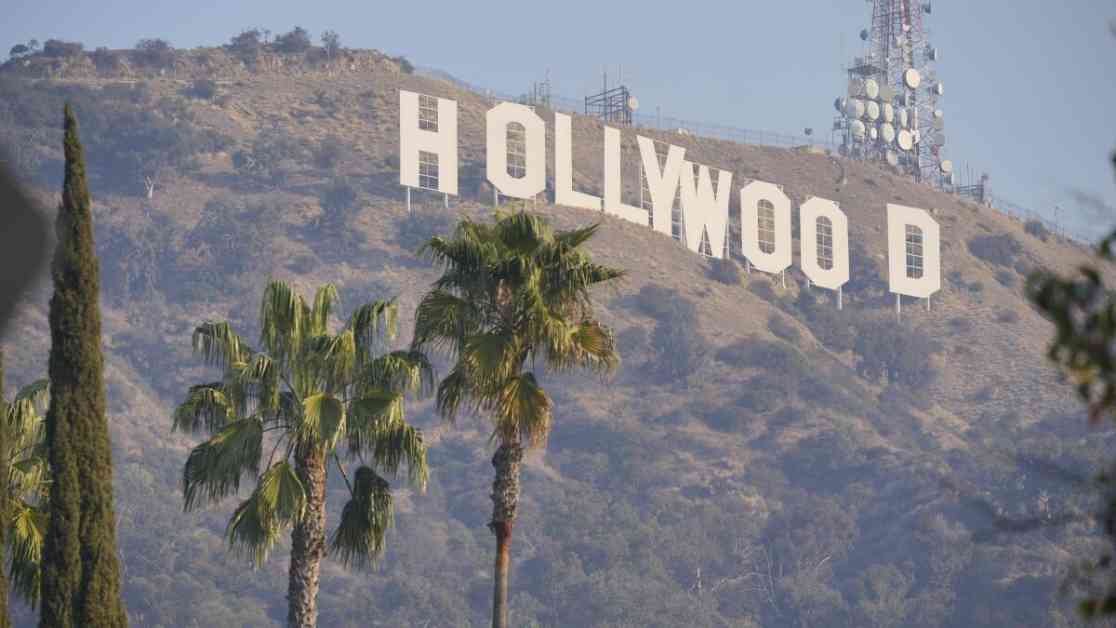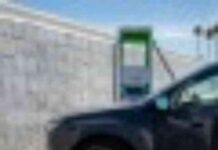**Disproving Social Media Fire Myths: The Truth About the Hollywood Sign Fire**
As social media platforms continue to be flooded with misinformation amid natural disasters, the recent Hollywood Hills fire has sparked widespread panic and confusion. The Sunset fire blazing through Runyon Canyon sparked a frenzy online, with an AI-generated image of the iconic Hollywood sign engulfed in flames quickly circulating across various platforms. However, the truth behind the Hollywood sign’s fate is quite different from what social media would have you believe.
**The Hollywood Sign Stands Tall**
Jeff Zarrinnam, chairman of the Hollywood Sign Trust and a resident of the Hollywood Hills neighborhood, confirmed that the Hollywood sign remains unscathed by the flames. Despite receiving evacuation alerts, Zarrinnam chose to stay behind to protect his home and the historic landmark that holds a special place in his heart. “There was nothing happening in or around the Hollywood sign itself,” he reassured. “The fire was contained west of the 101 Freeway, while the Hollywood sign stands unaffected to the east of the freeway.”
**Debunking the Palisades Fire Water Rumors**
Another prevalent rumor circulating on social media pertains to the Palisades fire, suggesting that firefighters ran out of water due to the empty Palisades reservoir. However, a closer look reveals a different story. The Santa Ynez Reservoir, holding 117 million gallons of water in the heart of the Palisades, was indeed closed for repairs. Still, this closure did not directly cause the lack of water pressure in the area during the fire.
Former DWP general manager Martin Adams shed light on the situation, explaining that the overwhelming demand for water during the Palisades fire led to a significant drop in water pressure, despite the reservoir’s closure. Three storage tanks in the Palisades hills eventually ran dry due to the excessive water consumption, further exacerbating the situation.
**The Impact of Misinformation During Emergencies**
The spread of misinformation during natural disasters not only hampers recovery efforts but also poses a threat to public safety. Jose Ramirez-Marquez from Stevens Institute of Technology emphasized the emotional exploitation and potential financial scams that misinformation on social media can lead to during crisis situations. With people turning to social media for real-time updates during emergencies, it becomes crucial to discern between accurate information and false claims.
**Identifying and Combatting Misinformation**
Iskander Sanchez-Rola, director of innovation for cybersecurity safety network Gen. As Juvare, highlighted the importance of pausing before sharing information online. Taking a moment to research the source, verify the legitimacy of the content, and cross-reference with official sources can help curb the spread of misinformation during emergencies. Recognizing how a post makes you feel and investigating contentious issues thoroughly are essential steps to combat the rampant misinformation online.
In conclusion, while social media serves as a valuable tool for communication during crises, it is equally essential to exercise caution and critical thinking to avoid falling prey to false information. By staying vigilant and verifying sources, we can navigate through emergency situations with clarity and accuracy. Remember, a moment of pause can make all the difference in combating misinformation online.




